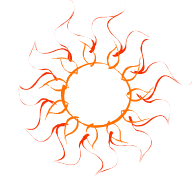Students from across the nation will gather at NASA’s Kennedy Space Center in Florida May 4-7 for the NASA Explorer Schools National Student Symposium. Future leaders in science, technology, education and math, or STEM, will present their work to NASA scientists, engineers, fellow students and educators.
The competitively selected group of fourth through 12th-graders consists of 58 students and their teachers. The various student research projects were designed to improve learning and bolster interest in STEM disciplines.
The students were required to complete an original investigation focused on existing NASA missions or research interests. Students presented their work to experts at virtual regional symposia held January through March at NASA centers using the agency’s Digital Learning Network.
In addition to presenting their work at the national symposium, participants also will learn more about NASA’s research activities and exploration missions. Students will tour a variety of operational facilities at Kennedy, including the space shuttle launch complex, and participate in a webcase of a career panel featuring NASA scientists, engineers and specialists.
Congratulations to the students and schools attending the National Student Symposium:
School Name
|
Grade
|
Topic
|
Orleans Elementary School
|
4
|
Hot Air Balloon
|
Forest Heights Elementary School
|
5
|
When They Build It, We Will Come
|
Forest Lake Elementary Technology Magnet School
|
5
|
Hand Sanitizer-Friend or Foe?
|
Franke Park Elementary School
|
5
|
The Insulation Properties of Snow
|
Johnson Magnet for Science, Technology, Engineering and Mathematics
|
5
|
NASA Lunar Plant Growth Chamber
|
Kate Waller Barrett Elementary School
|
5
|
Save the Earth
|
Kenneth J Carberry Intermediate School
|
5
|
Growing Crystals
|
Mack Benn Jr. Elementary School
|
5
|
It’s Just Right
|
Oceanair Elementary School
|
5
|
What is the Effect of Temperature on the Survival Rate of Yeast?
|
|
|
|
Harding Middle School
|
6
|
Testing the Effects of Altering Viscosities of Nutritions Supplements
|
Hobgood Elementary School
|
6
|
One if By Sea, Two if By Land
|
Lebanon Middle School
|
6
|
Growing plants on the Moon
|
Northeast Nodaway R-V
|
6
|
The Effect of the Number of Straws on the Distance the Rocket Racer Travels
|
Dr. Albert Einstein Academy
|
7
|
Lunar Plant Growth Chamber
|
Edward Harris Jr. Middle School
|
7
|
Dirty, Stinky Water
|
Ellen Ochoa Learning Center
|
7
|
Moldilocks and the FunGuy (Fungi)
|
Island City Research Academy
|
7
|
Life on the Moon
|
Broughal Middle School
|
8
|
Quasar or Black Hole
|
Ferndale Middle School
|
8
|
Planting the Future
|
Hudson Middle School
|
8
|
Water Filtration Challenge
|
Johnston Middle School
|
8
|
Microbes in Space
|
Key Peninsula Middle School
|
8
|
Waste Water Recycling System
|
Shelburne Community School
|
8
|
NASA On Target Challenge
|
Two Rivers Magnet Middle School
|
8
|
Life on Europa
|
Middle School at Parkside
|
7, 8
|
Mission to Phoebe
|
|
|
|
Albertville High School
|
11
|
Engineering Design Challenge: Water Filtration
|
Central Florida Aerospace Academy of Kathleen High School
|
11
|
The Effect of Sodiium Hypochlorite on the Efficiencies of Carbon Filters
|
Covenant Christian High School
|
9
|
Parabolar in Sapce and Time
|
Newnan High School
|
11
|
Lunar Surface Instrumentation
|
 Barrett’s NASA Save the Earth team won first prize in the Spaced Out Sports Challenge Contest! NASA contacted staff members Allyson Greene, Wendy Cohen, Laurie Sullivan, and Terry Bratt with the good news. Out of 57 entries nationwide, Barrett Elementary took first place in the contest. This accomplishment was the result of a huge team effort by all of the fifth-grade teachers, along with Renee Shaw’s wonderful filming and editing talents. The students worked very hard to design a fun, yet challenging sports-based game for astronauts on the International Space Station to play on an upcoming mission.
Barrett’s NASA Save the Earth team won first prize in the Spaced Out Sports Challenge Contest! NASA contacted staff members Allyson Greene, Wendy Cohen, Laurie Sullivan, and Terry Bratt with the good news. Out of 57 entries nationwide, Barrett Elementary took first place in the contest. This accomplishment was the result of a huge team effort by all of the fifth-grade teachers, along with Renee Shaw’s wonderful filming and editing talents. The students worked very hard to design a fun, yet challenging sports-based game for astronauts on the International Space Station to play on an upcoming mission.


 Richard Tabor, fourth-grade teacher, and Stephen Anderson, principal at Amerman Elementary School in Michigan, found a method encouraging fourth-grade students to think about multiple variables and stimulates their curiosity when an activity doesn’t come out as predicted. They introduced a “Solar Sprint” activity in which students design, test and race a solar-powered car built with LEGO bricks. They then presented one more challenge to their students: The winner of the Solar Sprint is not the fastest but, rather, the model that is most efficient, based on a ratio of speed to weight. The use of ratios simulates the actual work of scientists and engineers.
Richard Tabor, fourth-grade teacher, and Stephen Anderson, principal at Amerman Elementary School in Michigan, found a method encouraging fourth-grade students to think about multiple variables and stimulates their curiosity when an activity doesn’t come out as predicted. They introduced a “Solar Sprint” activity in which students design, test and race a solar-powered car built with LEGO bricks. They then presented one more challenge to their students: The winner of the Solar Sprint is not the fastest but, rather, the model that is most efficient, based on a ratio of speed to weight. The use of ratios simulates the actual work of scientists and engineers.